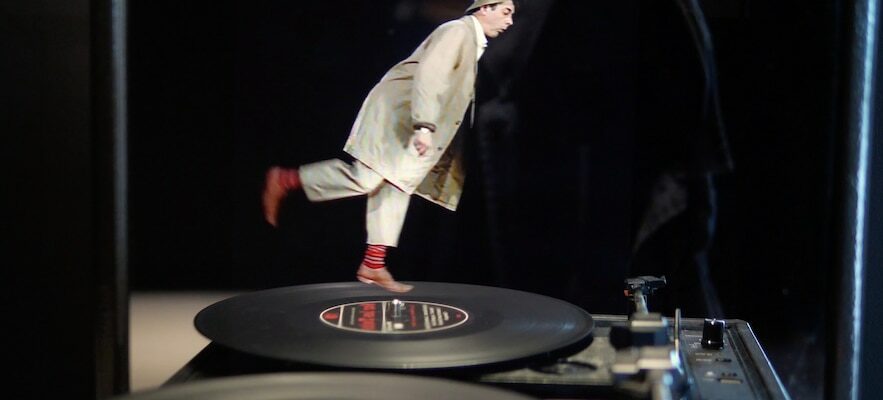If we except the vestibule, which serves as a preamble to the Mucem’s vast temporary exhibition space, On track! unfolds in one piece, rich in proposals and superimpositions, comparisons of objects, life-size stuffed animals, works of art from yesterday and today, fairground accessories of all kinds. Many things, therefore, but which the gaze can encompass as a whole. A tribute to clowns, clowns and acrobats, it is a journey woven with nostalgia and light. For L’Express, the director and scenographer Macha Makeïeff, unforgettable creator of Deschiens with Jérôme Deschamps, looks back on the genesis of this “exhibition-show” of which she is the woman-orchestra. Interview.
The Express: On track! presents itself as an “exhibition-show”. How did you approach it?
Macha Makeïeff: It is a still spectacle. I found it interesting to invest this large parallelepiped, like a new scene. What mattered to me was what was going to happen with the audience. We invented a mechanics, a geometry, where we can walk around, look. In a show, we are very attentive to the musicality, to the rhythm, and here this rhythm is made up of sequences, colors, movements. Something kinetic is happening for visitors. It had to be a machine that started moving with them. With their imagination, especially, because everything is not said, we do not accumulate information on objects, it is the imagination of each person which gives them life. It is a question, as in the theatre, of remaining in the questioning, in the proposal. What do you do with that? Of this dialogue between Niki de Saint Phalle, these patched trapezoids, this dog who seems to be waiting for the clown parade? What is being said here is that the show never ends.
Where does this intense need come from to exhume discarded objects, to keep alive things that no longer exist?
There is the obsession with putting these poor things, these paraphernalia, these messes, these beasts within a story that tells about humanity. Therein lies the strength of the link I have with the Mucem, which preserves declassified objects. Things, those of spectacle in particular, constitute a very human conservatory. And I would like us to come up with a point of view on this, on the destiny of things and beings. This also comes from my personal history: when I finish a show, I find myself with these costumes, these accessories, these pieces of decor destined to disappear, which tell of the downgrading, the destiny of the artist once the stage, the runway and the deserted lodges. I thought of the exhibition as an extension of the show, another celebration of those who are left behind.
Is there not something of sadness in the exhumation of these vestiges of a vanished world?
In the exhibition, as in the theater, I believe a lot in the power of fantasy. The figures summoned here are often artists who made people laugh, who made people smile, who disappear once the set is dismantled, the music hall is closed or the makeup is removed. They are aware of this gap and the fragility of their condition. Agnès Varda, who photographed circus and theater people everywhere, captured this in an admirable way, this something joyful and at the same time deeply melancholy. I was lucky enough to know her well and we often talked about these immobile things that begin to move because our gaze on them moves.
“Homage to Tati” (optical theater), 2010, by Pierrick Sorin.
/ © ADAGP, Paris, 2024
You have created live shows, but also exhibition designs. Today the two are finally merging…
The visual aspect of live performance has always mattered to me. For me, connecting the two is right. In this stroll through the Mucem, there are very few words, apart from a few introductory texts, signs here and there where the poets speak, but there are no overwhelming comments because the objects, the animals and the works are sufficiently eloquent. We put them into perspective so that they dialogue, that they tell a lot, like theaters without text, like Italian theater, for example, from which Molière was inspired. On stage, you can say a lot of things without words.
You notably summon Jacques Tati…
He came to see the first shows that we put on with Jérôme Deschamps, he had us come to his office and we spent hours listening to him. He was a great man who placed incredible demands on us. He appears in the exhibition, notably through the work of Pierrick Sorin, because he is one of these acrobats. Even before he was a filmmaker, he was touring music hall shows. Colette said of him that he was a magnificent centaur.
Colette, in fact, is one of the tutelary figures ofOn track!…
She is there at every moment, she covered us with her thoughts and her gaze throughout this adventure. Colette, the immense Colette, accompanies us with The Wanderer And The other side of the music hall which are foundational books, just as foundational as Stravinsky and Balanchine.
.
